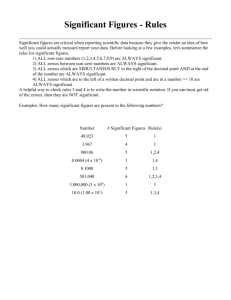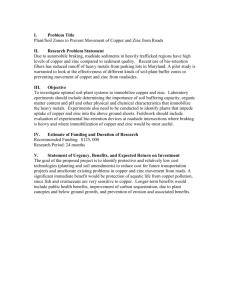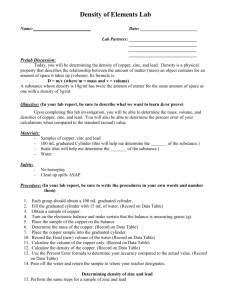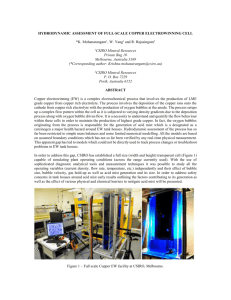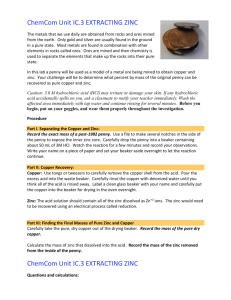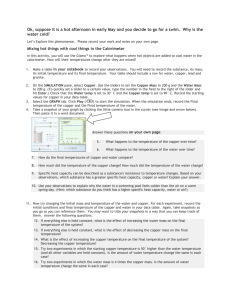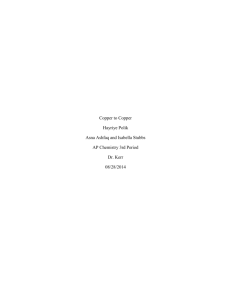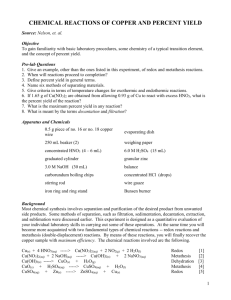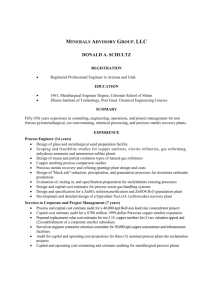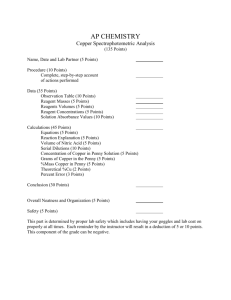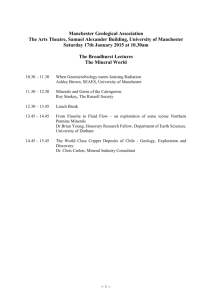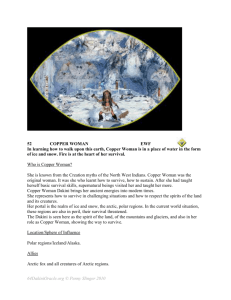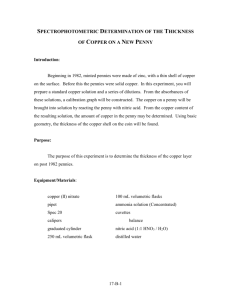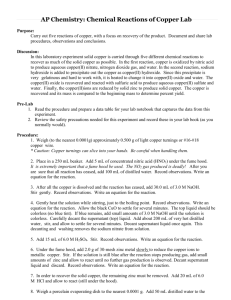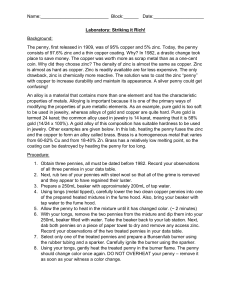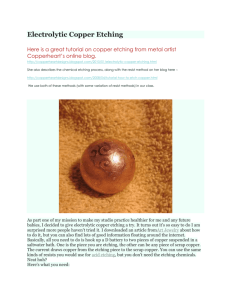Extraction of Copper Lab (shared)
advertisement
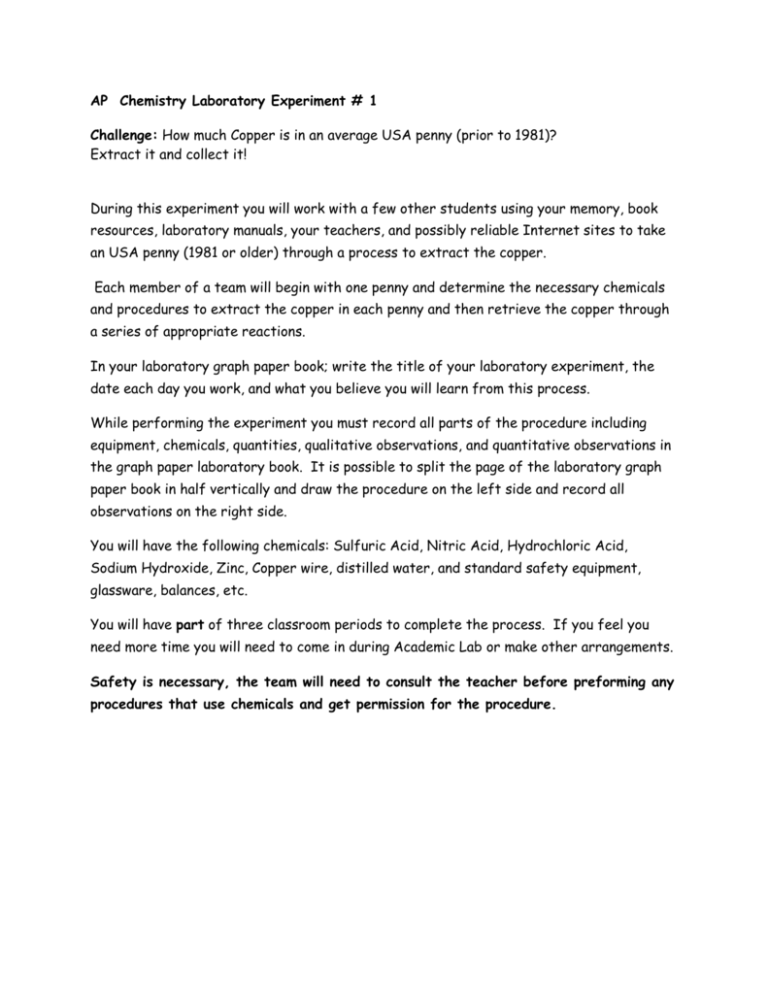
AP Chemistry Laboratory Experiment # 1 Challenge: How much Copper is in an average USA penny (prior to 1981)? Extract it and collect it! During this experiment you will work with a few other students using your memory, book resources, laboratory manuals, your teachers, and possibly reliable Internet sites to take an USA penny (1981 or older) through a process to extract the copper. Each member of a team will begin with one penny and determine the necessary chemicals and procedures to extract the copper in each penny and then retrieve the copper through a series of appropriate reactions. In your laboratory graph paper book; write the title of your laboratory experiment, the date each day you work, and what you believe you will learn from this process. While performing the experiment you must record all parts of the procedure including equipment, chemicals, quantities, qualitative observations, and quantitative observations in the graph paper laboratory book. It is possible to split the page of the laboratory graph paper book in half vertically and draw the procedure on the left side and record all observations on the right side. You will have the following chemicals: Sulfuric Acid, Nitric Acid, Hydrochloric Acid, Sodium Hydroxide, Zinc, Copper wire, distilled water, and standard safety equipment, glassware, balances, etc. You will have part of three classroom periods to complete the process. If you feel you need more time you will need to come in during Academic Lab or make other arrangements. Safety is necessary, the team will need to consult the teacher before preforming any procedures that use chemicals and get permission for the procedure. Please write the laboratory challenge into your graph paper book. Include . . . A. Title/Date(s) B. Drawn Procedure (words/numbers on amounts) C. Data Tables [Qualitative (be thorough) and Quantitative (numbers) D. Calculation(s) on percentage yield. E. Conclusion Statement F. Discussion of Theory (Law(s) that were observed by the or included G. Sources of Error: For each of the errors listed below explain if the percentage of copper collected would increase or decrease and why. a. If the amount of NaOH used was not in excess, the amount/percentage of copper would be ________________ because . . . b. If the black precipitate (CuO) was not drained well and collected carefully minus the supernatant, the amount/percentage of copper would be ________________ because . . . c. If there was some zinc metal unreacted, the amount/percentage of copper would be ________________ because . . . d. If the copper was not allowed to dry thoroughly, the amount/percentage of copper would be ________________ because . . . H. Questions: 1. List all of the reactions (balanced). 2. Classify each as a type of reaction (Redox, neutralization, decomposition, etc.) 3. Show one example calculation where you considering limiter and excess reagent. 4. Why is the solution blue after the H2SO4 is added? 5. Why is HCl available in the lab and what was the purpose of adding it when you had that option? 6. If an element that behaved like copper chemically but was colorless was used, how would this make the lab difficult to complete and/or make meaningful observations?
